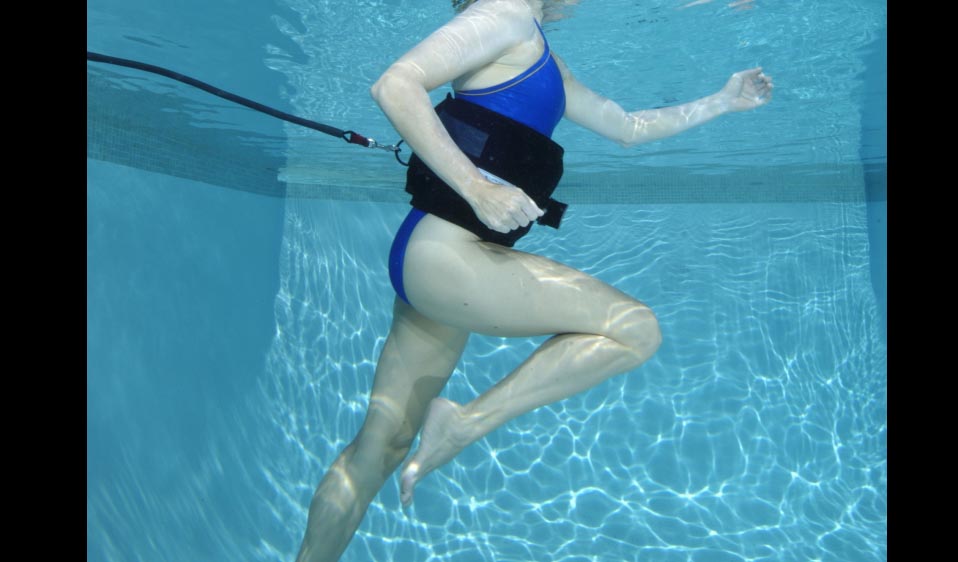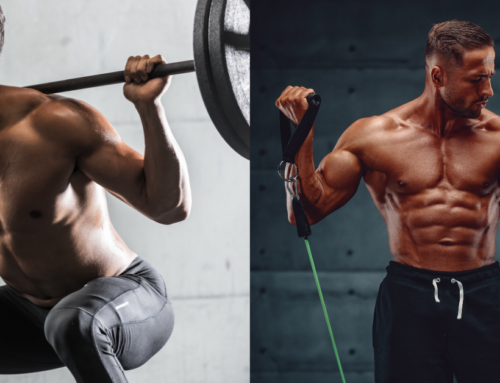In last month’s blog, we had a great interview with water training guru, Lynda Huey and so we thought it would be a good idea to provide additional information about the benefits of strength training in the pool.
If you missed out on last month’s interview with Lynda Huey, be sure to check it out! Strength and resistance training in the pool provides numerous advantages for athletes who are both rehabilitating or completely healthy and just looking for a bit of an edge. With pool workouts, you can design intense training regimens that decrease risks of injury and also support less soreness to muscles and help you bounce back more quickly after training.
Minimize Wear and Tear on Your Athletes’ Bodies
For decades, professional athletes have found tremendous benefits exercising in the pool. Sprinters Jeannette Bolden and Florence Griffith Joyner were both able to train in the pool effectively when they were injured and directly have their workouts translate over to medaling on the Olympic podium thereafter.
The impact of forces on your body is greatly minimized when working out in the pool. When standing chest deep in the pool, an athlete only experiences the pressure of 10% of his or her body weight. With much less pressure on an athlete’s body, wear and tear on the joints is effectively minimized and athletes will feel much less sore the next day, while still receiving an effective workout.
Enhance Recovery Time Between Workouts
With less wear and tear on your joints and less muscle fatigue, athletes are able to recover more quickly between intense workouts in the pool. High-intensity forms of weightlifting and sprinting on dry land would never allow for athletes to perform at their best consecutive days in a row without running the risk of overtraining athletes and causing overuse injuries.
Allow Athletes to Increase Their Number of High Intensity Workouts Each Week
Because water accommodates resistance, the harder athletes push or pull through water, the more resistance their muscles will experience both in eccentric and concentric movements to produce equal levels of strength in both types of movement patterns – which is critical for preventing overuse injuries out of the water.
Due to less impact and a quicker recovery time between workouts, athletes can increase their amount of high intensity workouts per week with strength and resistance training in the pool. Because water is much more resistant than air without any gravitational forces, a 30-minute workout in the pool can give you benefits very similar to a two-hour dry-land workout. With only so much time in the day for athletes to workout, if they are in college, high school, or have other jobs, pool-based workouts are incredibly effective and valuable in saving time.
Designing a Water Workout for Athletes
Fortunately, designing workouts for athletes in the water doesn’t have to be as hard as you might think. Almost any exercise your athletes do on land can be done in the water as well with the right modifications and proper equipment to further increase the effectiveness of the water workout. Many athletes and coaches find that, resistance cords can very helpful, including:
- The Long Belt Slider S11875- STRECHCORDZ®
- The Quick Connect Kit S11875QCKIT-STRECHCORDZ®
- The Kick Trainer S123-STRECHCORDZ®
Resistance cords in combination with water dumbbells and weighted boots are most commonly used. Additionally, sport specific equipment such as baseball bats or tennis racquets are effective to incorporate as well based on the sport your athletes are engaging in.
Get the Equipment You Need for Resistance Training in the Pool
For the high-quality resistance training products you need for your athletes’ pool workouts, turn to NZ Manufacturing. Professional sports teams and coaches trust us for good reason. For just starting to introduce pool workouts to your athletes’ training regime, we suggest you also check out a water training pioneer’s book titled the Water Power Workout by Lynda Huey and Robert Forster, P.T.





